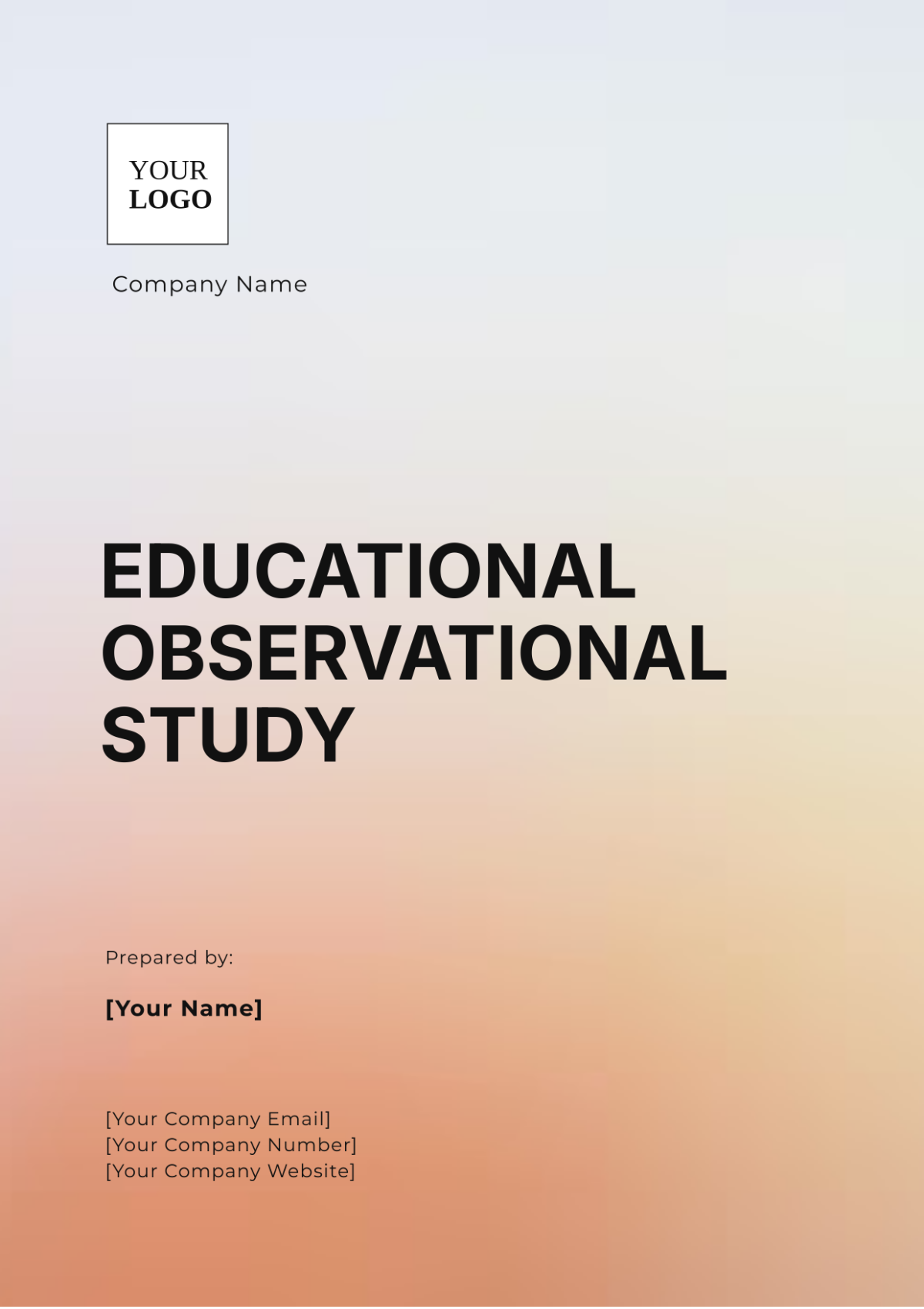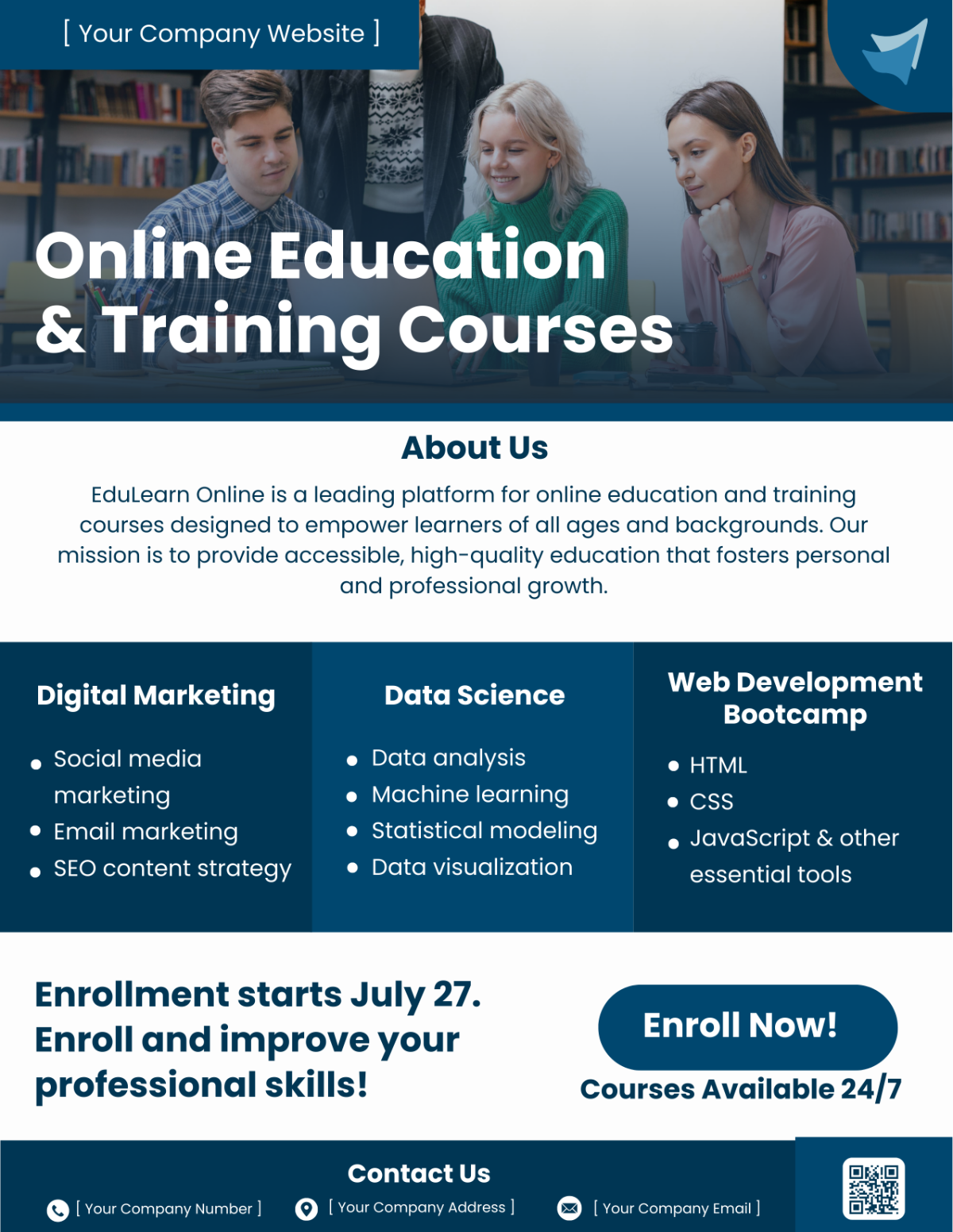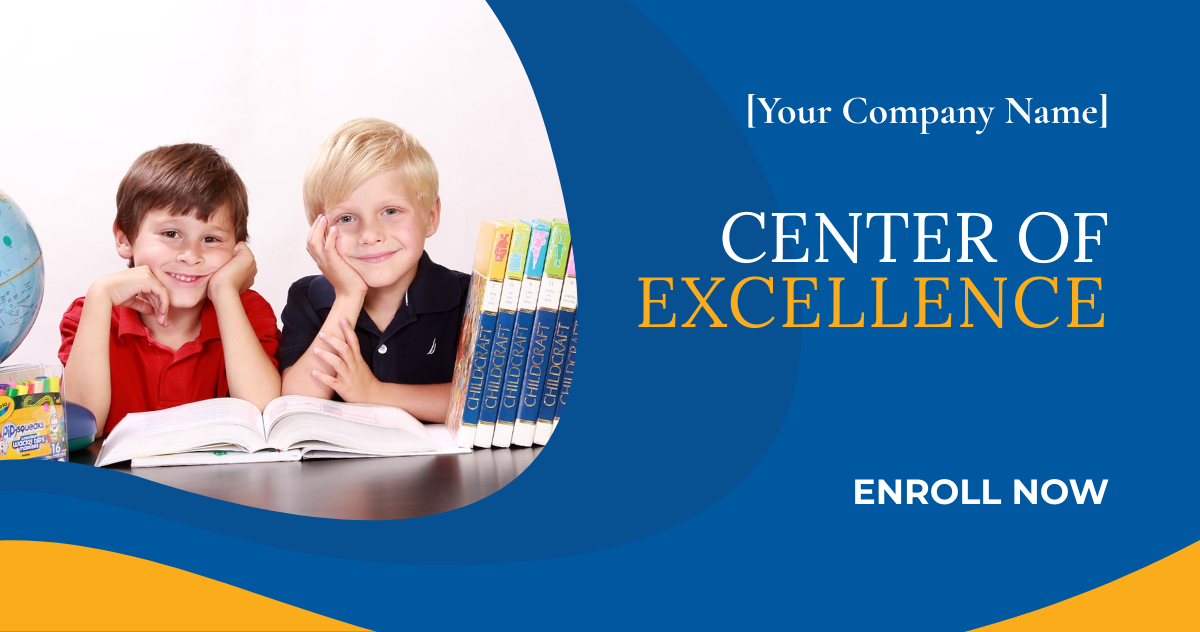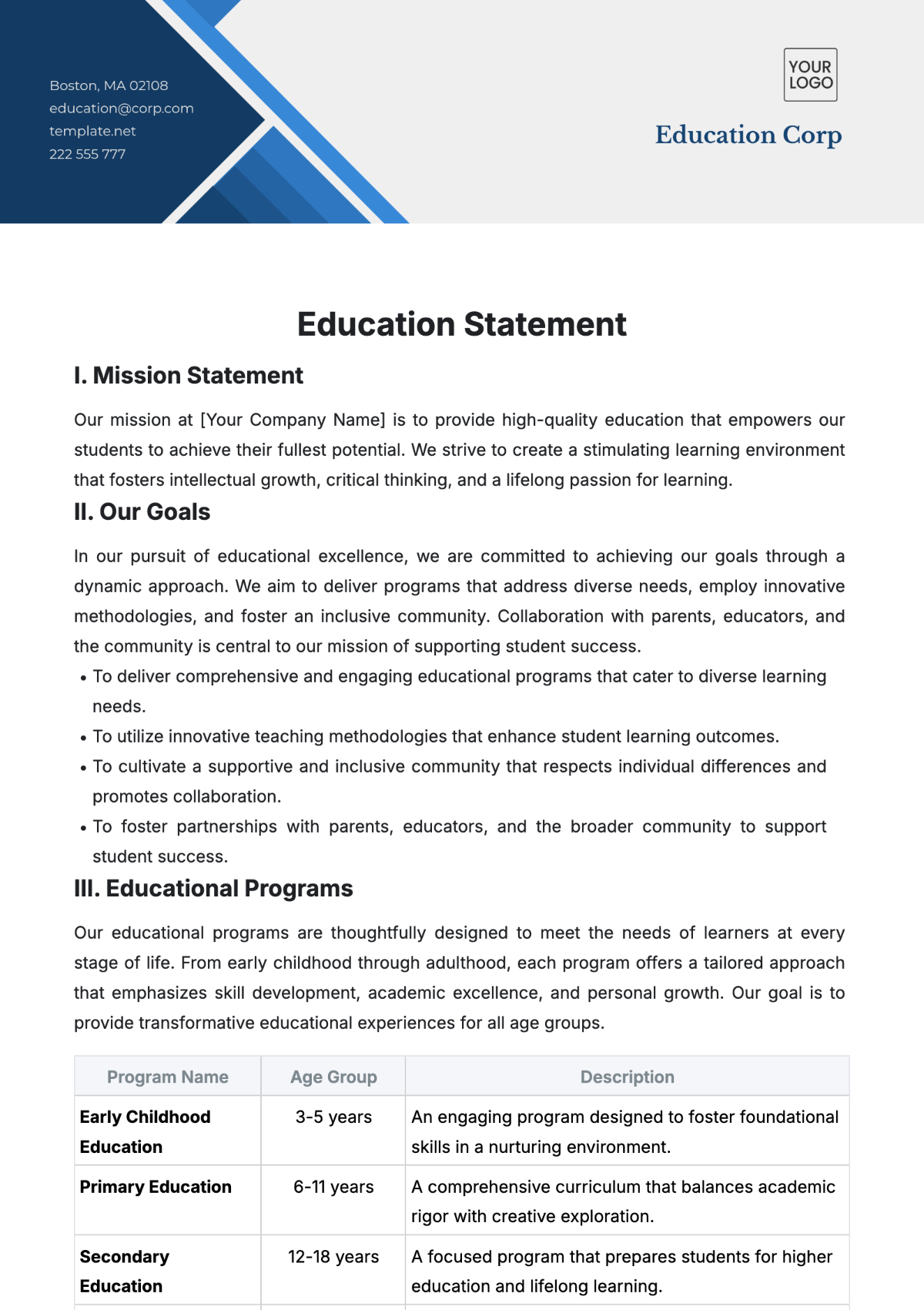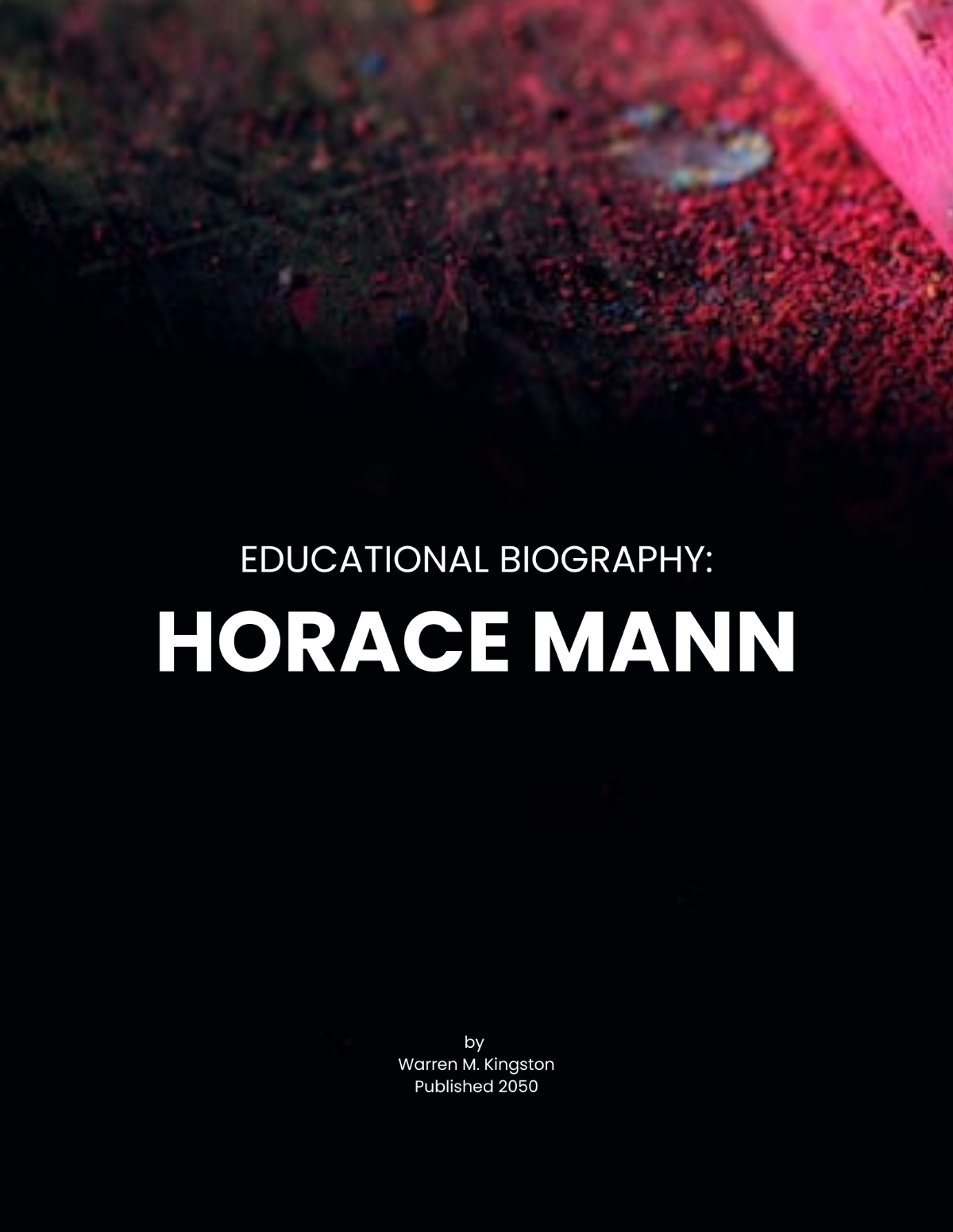Education Logic Model
I. Introduction
Welcome to the Education Logic Model for [Your Company Name]. This model is designed to guide and evaluate our educational programs, ensuring they align with best practices and regulatory standards. Our approach focuses on enhancing learning outcomes through structured planning and continuous assessment. By integrating clear objectives with measurable outcomes, we aim to create impactful educational experiences that meet both our organizational goals and the needs of our participants.
At [Your Company Name], we are committed to maintaining compliance with US educational standards and regulations. This includes adhering to guidelines set forth by the Department of Education and other relevant bodies. Our logic model serves as a foundational tool in this effort, allowing us to systematically track and refine our educational strategies. By doing so, we ensure that our programs not only meet legal requirements but also foster a supportive and effective learning environment.
II. Components of the Education Logic Model
In this section, we outline the core components of our Education Logic Model at [Your Company Name]. These components are essential for structuring and evaluating our educational programs. By detailing inputs, activities, outputs, and outcomes, we establish a clear framework for assessing program effectiveness and ensuring alignment with our mission and regulatory standards. This structured approach helps in systematically managing and improving our educational initiatives.
1. Inputs
Resources dedicated to or consumed by the program.
Human resources (e.g., staff, volunteers)
Financial resources (e.g., budget, grants)
Physical resources (e.g., facilities, equipment)
Materials (e.g., curriculum, educational materials)
Partnerships and collaborations
2. Activities
The actions and processes to use the inputs to fulfill the program's mission.
Development of instructional materials
Training and professional development
Instructional delivery methods (e.g., workshops, classes)
Engagement activities (e.g., parent meetings, community events)
3. Outputs
The measurable, tangible, and direct products or results of the program activities.
Number of training sessions conducted
Number of participants attending
Materials distributed
Reports generated
4. Outcomes
The specific changes in program participants’ behavior, knowledge, skills, status, and level of functioning.
Short-term outcomes (e.g., increased knowledge, improved skills)
Intermediate outcomes (e.g., changes in behavior, application of skills)
Long-term outcomes (e.g., career advancement, educational attainment)
III. Example Logic Model Template
This section provides a practical example of a Logic Model Template used at [Your Company Name]. It illustrates how inputs, activities, outputs, and outcomes are organized and interconnected to achieve educational goals. By presenting a simplified template, we offer a clear reference for applying the logic model framework to real-world scenarios, ensuring that each component contributes effectively to program success and improvement.
Inputs | Activities | Outputs | Outcomes |
|---|---|---|---|
Staff, Budget, Facilities | Develop instructional materials, Conduct training sessions | Number of training sessions, Attendance records | Increased teacher skills, Higher student performance |
IV. Conclusion
The Education Logic Model serves as a vital tool for [Your Company Name] in the planning, execution, and evaluation of educational programs. By systematically organizing inputs, activities, outputs, and outcomes, this model provides a comprehensive framework for aligning resources and actions with the program’s objectives. This structured approach not only aids in the efficient allocation of resources but also ensures that all program components work cohesively towards achieving desired educational outcomes.
Implementing the Education Logic Model allows us to monitor and measure the effectiveness of our programs continuously. It offers valuable insights into what works well and identifies areas for improvement, thereby enhancing overall program quality. Through regular assessment and refinement based on this model, we can adapt to changing needs and ensure that our educational initiatives have a meaningful and lasting impact. By maintaining this rigorous approach, [Your Company Name] reaffirms its commitment to delivering high-quality educational experiences and achieving our organizational goals.





















